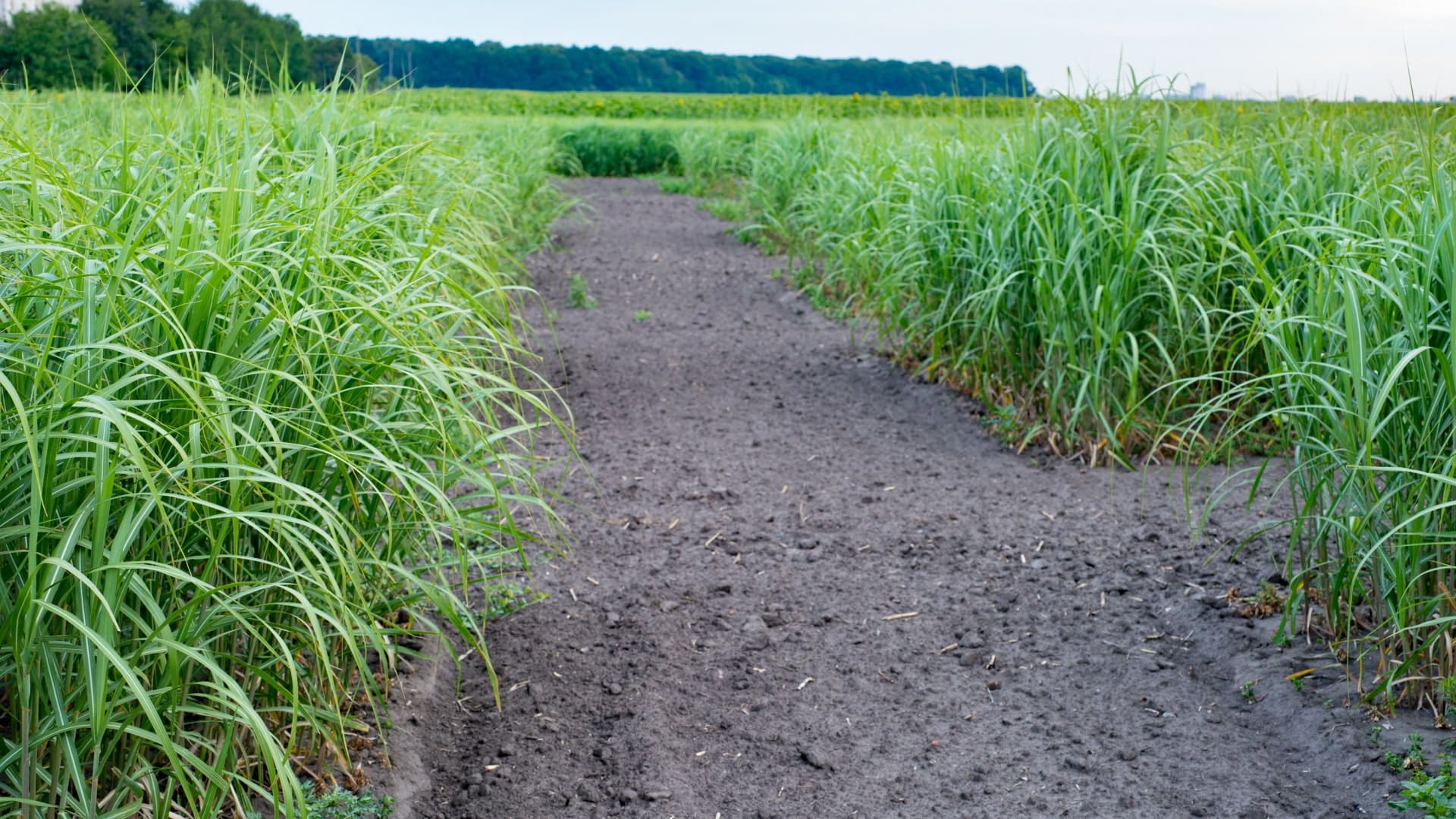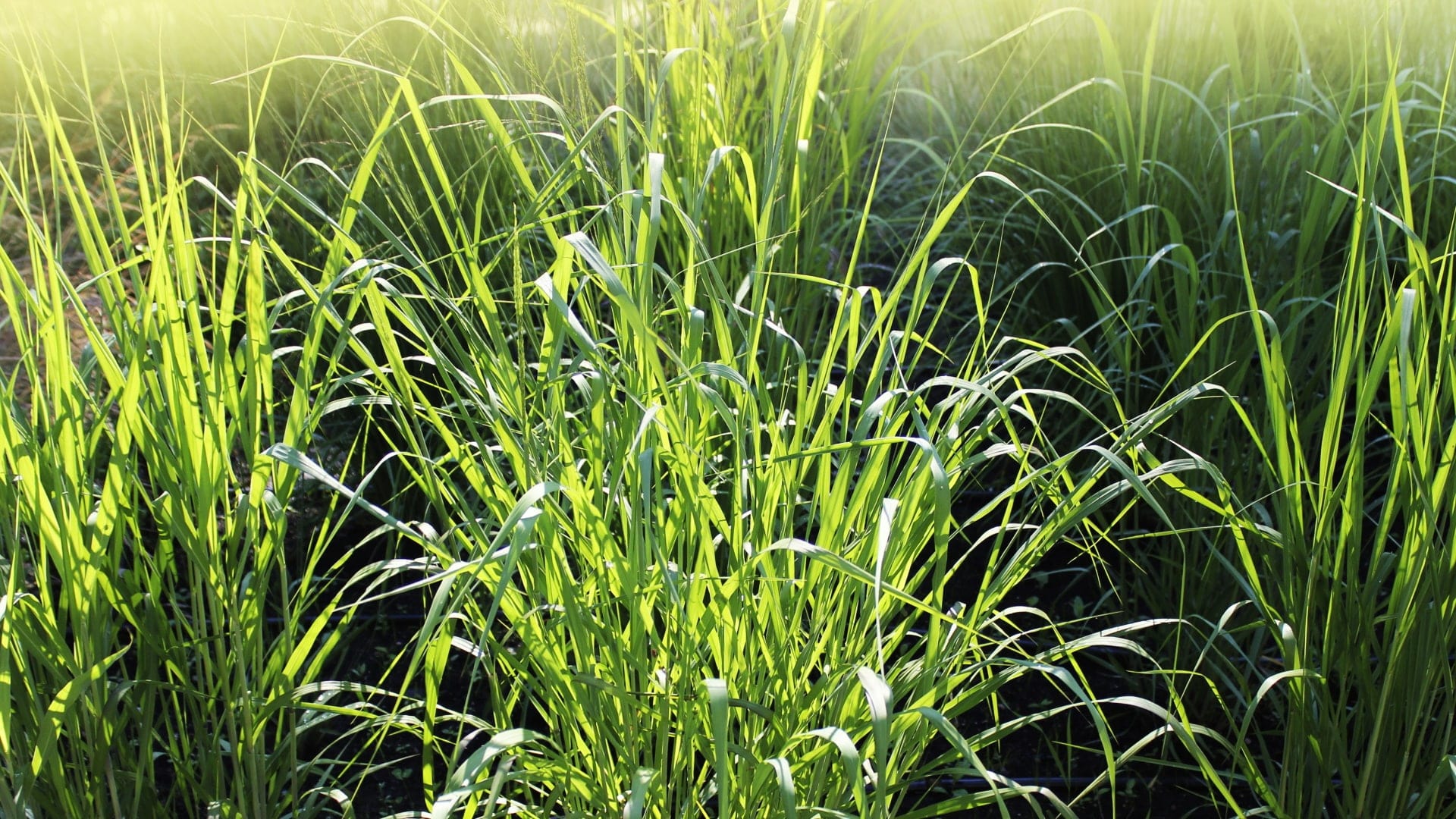Switchgrass
Panicum spp – Panicum virgatum
General info
Switchgrasses are C4 perennial monoecious grasses native to North America with over 400 species within the genus. They are propagated by seeds and grow up to around 2.7 M in height. Similar to reed canary grass, switchgrass can also be incorporated into forage considerations for grazing (suitable for cattle only due to toxicities in other animals) and straw produced can be used for livestock bedding.
Attempts are being made to achieve domestication and commercial varieties of switchgrass via targeted breeding to enhance bio-energy quality varieties. Currently Transgenic approaches lead on this, with switchgrasses susceptible to transformation via agrobacterium, though overall this method of change is more costly than traditional breeding.
Cultivation and agronomy
Switchgrass has shown suggested yields of around 14 oven dried tonnes ha-1 y-1 with certain studies predicting yields up to 20 dried tonnes ha-1 y-1 in modelling scenarios rather than practical applications. It remains harvestable for 10–12 years before replanting considerations are needed. It is harvested annually using similar machinery to that commonly used for pasture activities.
The species has an extremely widespread distribution across Northern America due to its adaptable nature with multiple ecotypes being present. The two main ecotypes/cytotypes of interest, for their roles in incorporation into UK growth strategies and inclusion as bioenergy crops, are the upland and lowland ecotypes. The upland ecotypes are generally shorter and more cold-tolerant potentially having more applicability in the UK. However, the lowland ecotypes can achieve higher yields in the right environments, despite being more sensitive to stresses like moisture than their upland equivalents.
An important consideration with switchgrass species in the UK, is their apparent lower responsiveness to N fertilizer, yield increases seen on application of N were around half of those seen with similar bioenergy crop reed canary grass. As such, N fertilisation and environmental balances associated with these grass species, may need careful consideration in any bioenergy production strategy.
Return to crops overview
Relevant research
Smeets, E. M., Lewandowski, I. M., & Faaij, A. P. (2009). The economical and environmental performance of miscanthus and switchgrass production and supply chains in a European setting. Renewable and sustainable energy reviews, 13(6-7), 1230-1245.
Allison, G. G., Morris, C., Lister, S. J., Barraclough, T., Yates, N., Shield, I., & Donnison, I. S. (2012). Effect of nitrogen fertiliser application on cell wall composition in switchgrass and reed canary grass. Biomass and Bioenergy, 40, 19-26.
Clifton‐Brown, J., Harfouche, A., Casler, M. D., Dylan Jones, H., Macalpine, W. J., Murphy‐Bokern, D., … & Lewandowski, I. (2019). Breeding progress and preparedness for mass‐scale deployment of perennial lignocellulosic biomass crops switchgrass, miscanthus, willow and poplar. Gcb Bioenergy, 11(1), 118-151.

